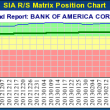The Taper Tantrum
BMO ETF Portfolio Strategy Report
by Alfred Lee, CFA, CMT, DMS,
Vice President, BMO ETFs,
Portfolio Manager & Investment Strategist
BMO Asset Management Inc.
alfred.lee[at]bmo.com
July 11, 2013
Highlights of the Report
• The major storyline that drove markets this quarter was the expectation that the U.S. Federal Reserve (“Fed”) would look to moderate or “taper” its current US$85 billion per month bond buying program. Given that U.S. monetary policy either directly or indirectly drives the interest rate policy of other countries, yields, as a result of the expectation, rose globally. The U.S. ten-year treasury bond yield rose 111 bps to 2.74% from May 1 (the May Federal Open Market Committee “FOMC” meeting) to July 5. The Canadian ten year bond saw a similar jump rising 87 bps over the same time horizon to 2.55% (Chart A).
• It should be noted, however, that the tapering by the Fed of its bond buying does not mean the end of the program altogether. Additionally, interest rates are expected to remain low, with the expectation that the U.S. will maintain its current overnight rate level until 2015. It is important to remember that it is a positive to the overall economy that the Fed is hinting at tapering, as it suggests the economy is no longer as reliant on the central bank’s stimulus measures.
• Over the quarter, U.S. equities continued to outperform with the S&P 500 Composite’s 2.9% total return in the second quarter outpacing the 0.8% and -4.1% total return of the S&P/TSX Composite Index and MSCI World Index respectively. Volatility in equities returned momentarily with the concern over the Fed’s tapering and continued to rise after the Fed confirmed the possibility that the tapering could come as early as late-2013. Volatility however abated to end the quarter as market conditions later normalized.
• In light of the concerns for higher interest rates, the U.S. Treasuries curve took on a parallel shift, with points along the term structure rising in yield. The Canadian federal yield curve also made a similar shift (Chart B), putting significant pressure on income-oriented assets, as those assets tend to be more sensitive to interest rate changes. All of equities, bonds and commodities were negatively impacted, although certain sectors within those asset classes were less affected.
• Despite the skittishness in the markets to end the quarter, equity market volatility remained reasonably low. The CBOE/S&P Implied Volatility Index (VIX)1 rose from 12.7 on March 31, to 16.9 to end the second quarter and the Canadian based S&P/TSX 60 VIX Index (VIXC) rose 11.7 to 15.0. The steepening of the term structure for VIX futures also appeared to be moderate with September 2013 VIX futures rising only 30bps to 18.75. We reiterate that rising rates signal an improving economy and extreme volatility would not be justified.
• Since early May of 2011, the U.S. dollar has been strong relative to most major currencies, with the U.S. dollar index gaining 15.8% since that time. This gain has been due to two reasons, improving economic data, particularly with U.S. real estate and unemployment and other major currencies such as the Japanese yen and our own Canadian dollar have been weaker. Should tapering concerns lead to higher long-term rates in the U.S., relative interest rates between the U.S. and other countries may narrow, leading to a further tailwind for the greenback. Therefore, U.S. assets, which we have recommended investors to overweight, could potentially provide an additional currency return.
You can read (or download a copy of) this report in its entirety in the slidedeck below:














